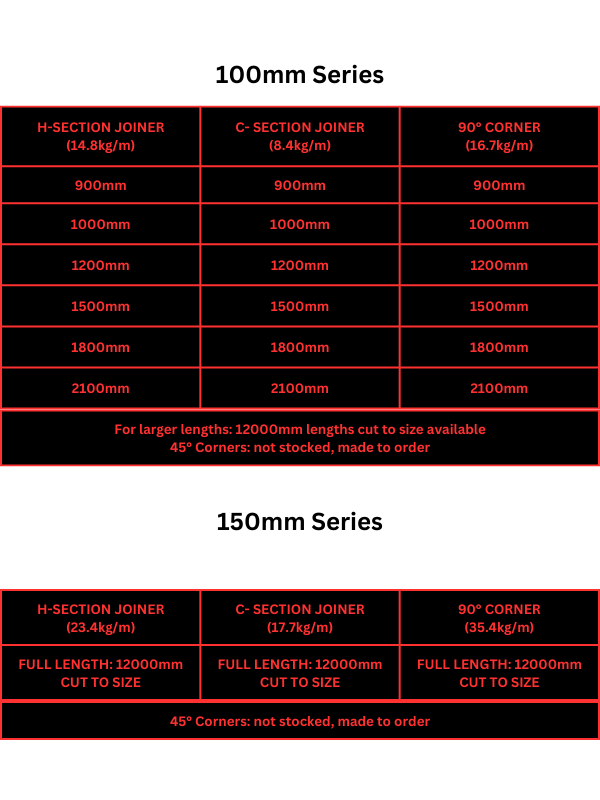Retaining walls are designed to make slope areas functional by flattening the slope so that water and soil don’t flow downward. They’re typically made of materials like concrete, stone, or wood, and they can be designed to fit a variety of needs and styles. However, when it comes to retaining walls, steel posts can be a great option to consider. In this blog, we’ll take a closer look at retaining wall steel posts, including what they are, why they’re beneficial, and how they can be installed.
What Are Retaining Wall Steel Posts?
Retaining wall steel posts are vertical posts made of steel that are used to anchor and stabilise a retaining wall. These posts are typically driven deep into the ground and are anchored with concrete to provide a strong foundation for the wall. Steel posts are available in a variety of sizes and lengths to accommodate the specific needs of each project.
Retaining Wall Post Size Guide:
At Melsteel, we stock H posts, C posts and 90° corners in various sizes. For large lengths, we stock 12000mm lengths that we can cut to size to provide you with a more customised solution.
While we don’t stock 45° corners, we can make these to order in our fabrication department.
Here are the standard lengths that we stock, ready to go from our Hallam factory:

View and purchase retaining wall steel posts here.
Why Choose Retaining Wall Steel Posts?
There are several benefits to choosing retaining wall steel posts. First and foremost, they provide a strong and durable foundation for the wall. Steel is incredibly strong and can withstand heavy loads, making it an excellent choice for retaining walls that need to support a lot of weight. Additionally, steel posts are resistant to rot, decay, and insect damage, which means they’ll last longer than other materials like wood.
Another benefit of steel posts is that they’re relatively easy to install. While installing a retaining wall can be a complex process, steel posts can be driven into the ground quickly and efficiently. This means that the installation process can be completed more quickly, which can save time and money.
Finally, steel posts offer a sleek and modern look that can be appealing in many applications. While concrete or stone retaining walls can look heavy and bulky, steel posts can provide a clean and streamlined appearance.
How to Install Retaining Wall Steel Posts
Installing retaining wall steel posts involves several steps:
- Check council and relevant permits: Small retaining walls usually don’t require council approval. However, you still should check with authorities to ensure your new retaining walls are compliant.
- Dig the foundation: The first step is to dig a foundation trench for the posts. The depth and width of the trench will depend on the specific project requirements.
- Install the posts: Next, the steel posts are driven into the ground using a specialized post driver. The posts should be driven deep enough to provide a solid foundation for the wall.
- Anchor the posts: Once the posts are in place, they’re anchored with concrete. This provides additional stability and helps to keep the posts in place.
- Install the retaining wall: With the posts in place and anchored, the retaining wall can be installed. This may involve laying blocks or pouring concrete, depending on the specific design.
- Finish the wall: Finally, the wall can be finished with a capstone or other decorative elements to complete the look.
Consider Steel For Your Retaining Wall Posts
Retaining wall steel posts are an excellent choice for those looking for a strong and durable foundation for their retaining wall. They offer several benefits, including easy installation, durability, and a modern appearance. If you’re considering a retaining wall for your property, be sure to consider the advantages of steel posts.

